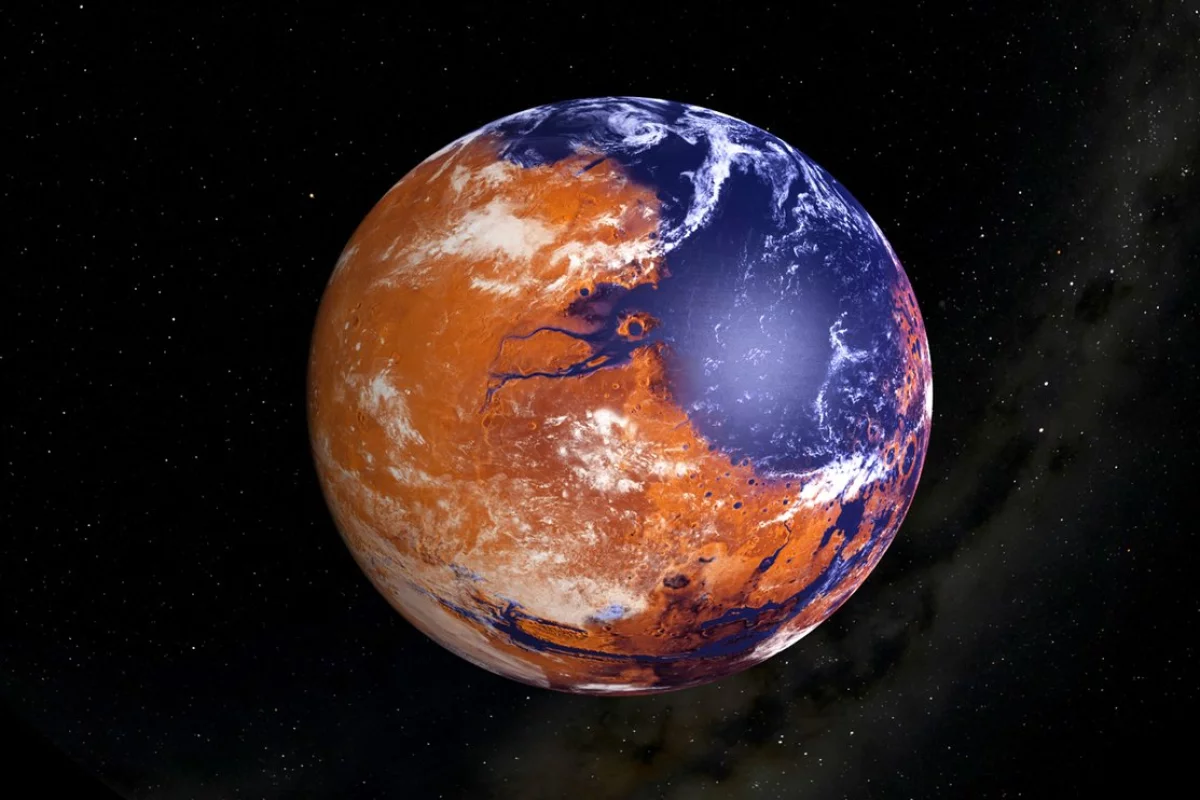Data from NASA's Curiosity rover collected on Mars is shedding new light on how the Red Planet became uninhabitable in the distant past due to a changing climate that caused the surface water to evaporate or be locked away as ice.
It wasn't that long ago that the idea of life on Mars was pretty much of a given. At worst, Mars was thought to be a dying world, but far from a dead one. In his novels, Edgar Rice Burroughs depicted exotic Martians riding eight-legged thoats across dead sea bottoms, and H. G. Wells made Mars the home of super-intelligent beings building war machines to invade the Earth. Meanwhile, serious scientists debated the existence of canals on Mars and whether these were planet-wide irrigation works designed to carry water from the poles to cities on the equator.
Well into the 1950s and '60s, it was assumed that there was some sort of life on Mars. Even scientists who insisted that Mars was a dead world still considered it was likely home to mosses, lichens, and other sparse vegetation.
Today, Mars is seen as being so inhospitable to life that anyone who found a patch of lichen on the planet would be a shoe-in for a Nobel Prize.
Over half a century of direct exploration of Mars by an armada of robotic orbiters and landers has confirmed that it's a dead world where if any life did once exist, was likely no more advanced than bacteria that died out two billion years ago. However, some still hold out hope that some extremophile microbes might hang on in some deep-buried oasis.

As for the surface, with most of the Martian atmosphere now long blown into space by the solar winds, the mountains and plains of Mars are so dry that they make the driest Earth desert seem like a rain forest, while the desiccated conditions and relentless cosmic radiation have given the soil a strange, destructive chemistry.
However, it was a very different story about four billion years ago. In the ancient past, Mars had a much more substantial atmosphere and there was so much water that lakes formed, rivers ran, and a third of the surface was dominated by a shallow ocean. Exactly how long this lasted or how stable it was is still unclear, but as far as life is concerned, it was a paradise compared to the present day.
How the climate changed so radically is one of the key questions to understanding the history of Mars. The latest piece of the puzzle are carbonates that have been collected by the robotic Curiosity rover from the 96 mile-wide (154 km-) Gale Crater, which was formed by a meteor impact 3.5 to 3.8 billion years ago.
The geology shows that the crater contained water, which means that it holds minerals like clays, sulfates, and carbonates that form in a wet environment. These were scooped up by Curiosity using its robotic arm and manipulator and were then analyzed by the rover's Sample Analysis at Mars (SAM) and Tunable Laser Spectrometer (TLS) instruments.
Formed from carbon and oxygen, carbonates are particularly interesting from a climate point of view because the heavier isotopes of these atoms tend to remain behind while the lighter ones escape into the atmosphere as the carbonates form. Therefore, the ratios of these isotopes forms a record of the Martian climate that includes temperature and acidity of the water, and the composition of the water and the atmosphere.
"The isotope values of these carbonates point toward extreme amounts of evaporation, suggesting that these carbonates likely formed in a climate that could only support transient liquid water," said David Burtt of NASA’s Goddard Space Flight Center. "Our samples are not consistent with an ancient environment with life (biosphere) on the surface of Mars, although this does not rule out the possibility of an underground biosphere or a surface biosphere that began and ended before these carbonates formed."
According to NASA, the isotope ratios point to two mechanisms at work forming the carbonates. One of these is the carbonates forming during a series of wet/dry cycles and the other is formation in very salty water under cold, ice-forming conditions in Gale Crater. What this means is that Mars might have gone through a cycle of habitability and uninhabitability or one where the remaining water was increasingly locked in ice while the surviving liquid became extremely salty to the point where it was as hostile to life as the Dead Sea. Or the most likely scenario is a combination of the two.
"The fact that these carbon and oxygen isotope values are higher than anything else measured on Earth or Mars points towards a process (or processes) being taken to an extreme," said Burtt. "While evaporation can cause significant oxygen isotope changes on Earth, the changes measured in this study were two to three times larger. This means two things: 1) There was an extreme degree of evaporation driving these isotope values to be so heavy, and 2) These heavier values were preserved so any processes that would create lighter isotope values must have been significantly smaller in magnitude."
The research was published in the Proceedings of the National Academy of Sciences.
Source: NASA






